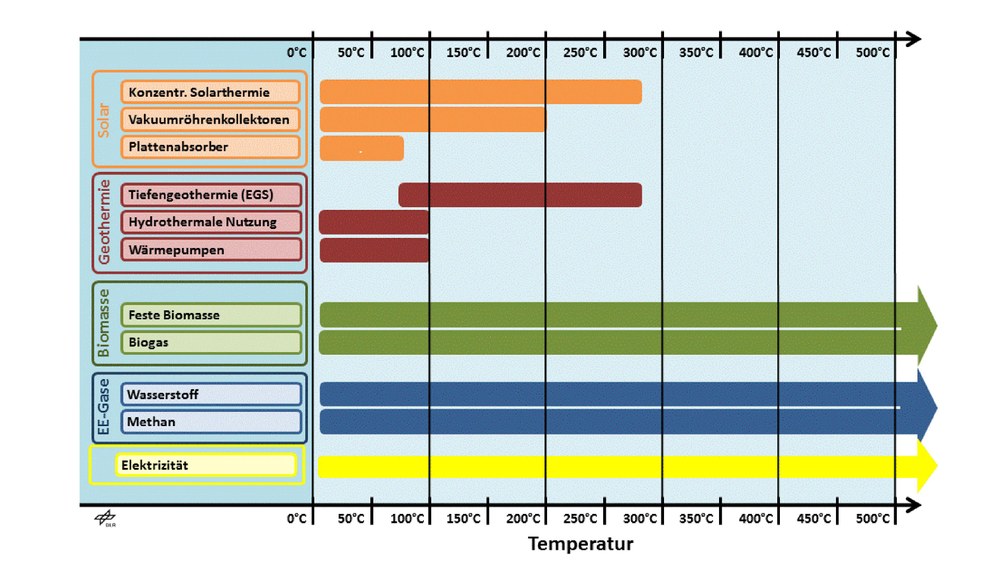Process heat for industry – use of renewable energy depends on temperature requirements
The heating sector is playing a crucial role in the sustainable transformation of the energy system. The production of heat for industry, households, business and service providers accounts for nearly half of the total energy consumption in the European Union. Industry needs more than a third of that amount, mostly for process heating, but also for space heating and hot water. Researchers from the German Aerospace Center (Deutsches Zentrum für Luft- und Raumfahrt; DLR) have now investigated what the temperature requirements are for industrial process heating in Europe. This data set makes it possible to analyse the extent to which the need for industrial process heating in the 28 EU countries can be met over the long term by renewable energy sources.
Important to know what temperature is required
In the study, the DLR energy researchers performed a detailed investigation into process heating, subdivided according to temperature ranges. "This differentiation is particularly crucial for process heating because most renewable energy sources can only provide heat in a certain temperature range," explains Tobias Naegler from the Department of Systems Analysis and Technology Assessment at the DLR Institute of Engineering Thermodynamics in Stuttgart. While temperatures below 100 degrees Celsius are usually sufficient for space heating and hot water, the range for industrial process heating reaches well in excess of 1000 degrees Celsius. In Europe, the dominant high-temperature range is above 500 degrees, such as is needed for processes in the chemical industry, steelmaking or in cement production. This high-temperature range accounts for more than 50 percent of industrial heating requirements.
The technology employed depends on the temperature range
A large number of technologies are available for producing heat from renewable resources. However, many of them have technological limits in terms of the maximum temperature that can be achieved. Collecting energy from the environment, for example by using heat pumps, is currently limited to temperatures below 100 degrees Celsius. Hydro-geothermal methods, which extract heat from geothermal water or hydrothermal sources of steam, yield temperatures of between 140 and 300 degrees Celsius, depending on the geology and the site. Solar thermal panel absorbers can reach temperatures up to 75 degrees Celsius, but temperatures over 500 degrees Celsius are possible with concentrating solar power. Combustion of biomass, biogas or bio-methane can yield temperatures of about 500 degrees. Biomass is of course available on a sustainable basis to only a limited extent. In addition, usage competition – for example, using biomass for nutrition or as a construction material – sets a limit to using biomass energy resources for producing heat.
"When the goal is to produce process heat in the high-temperature range – over 1000 degrees Celsius – electricity produced from renewable energy sources and synthetic gases are promising options," Naegler summarises. Hydrogen can be used as a synthetic gas, produced by means of electrolysis with renewable electricity, or synthetic methane. Once it has been produced, 'green' hydrogen can be converted into methane by a chemical process. "The close coupling of the heating sector with the electricity supply system, which results from the use of electricity or synthetic gases especially in the high-temperature ranges, entails risks but also offers opportunities with regard to integrating high proportions of renewable electrical energy into the energy supply system as a whole. This aspect will be examined in more depth during further studies," says Naegler.
The full study is available at http://onlinelibrary.wiley.com/doi/10.1002/er.3436/full.



